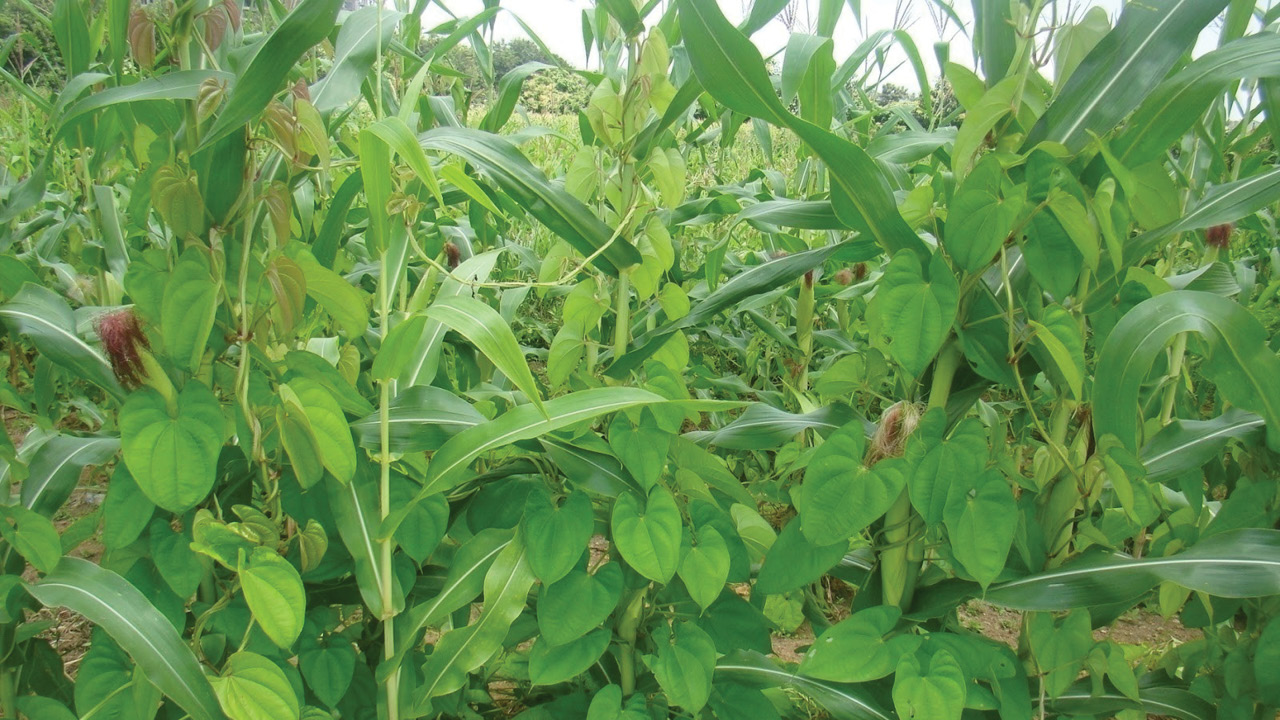Regional Centre of ICAR-Central Tuber Crops Research Institute – Indian Council of Agricultural Research (ICAR)

The long storability of yams for 3-4 months helped farmers to get rid of food insecurity.
Problem
- Tuber crops have a special niche in tribal food habits
- They play a crucial role in the food and nutritional security of the tribes
- The yield of tuber crops in the present production systems was very low
- No systematic effort was undertaken to improve the efficiency of tuber production
- Tribal farmers were more dependent on crops such as rice and maize
Solution
- Tuber crops based farming system models (0.4 Ha and 0.2 Ha models) were implemented in upland ecology
- Capacity building training was arranged on-farm
- After harvest value-addition training was organised
- Initiatives like Tuber Days, Kisan Melas, Exhibitions were also undertaken
- Crops were monitored with farm visits and excess produce was sold off through market linkages
Outcomes
- Availability of tuberous crops for farmers increased due to the programme
- Farmers felt tuber crops cultivation was relatively easy with no pests and diseases and showed great flexibility in planting and harvesting
- Consumption of tuber crops increased due to availability at their doorstep
- Longer storability helped farmers get rid of food insecurity
- Tribal farmers were also trained on value addition of tuber crops like fried chips production, this generated income avenues for farmers
Project Details
Category: Excellence in Technology
Sub-category: Agriculture
Project: Regional Centre of ICAR-Central Tuber Crops Research Institute
Organisation: Indian Council of Agricultural Research (ICAR)
Start Date: 01-Apr-2012
https://icar.org.in/
Problem
Tuber crops have a special niche in tribal food habits. They play a crucial role in the food and nutritional security of the tribals. Sweet potato is the predominant tuber crop in tribal-dominated states such as Orissa (>45,000 Ha), Chattisgarh (>10,000 Ha) and Jharkhand (>10,000 Ha). Yams, colocasia and elephant foot yams are mostly grown in backyards and sometimes collected from forests. The yield of tuber crops in the present production systems is very low. No systematic effort was undertaken to improve the efficiency of these production systems by careful application of improved tuber crops technologies. Earlier, most of the targeted tribal farmers were growing rice, ragi and maize only. Very few farmers were aware of sweet potato cultivation in substantial quantities.
Solution
Tuber crops based farming system models (0.4 Ha and 0.2 Ha models) were implemented in upland ecology to improve the income and livelihood of tribal farmers under the tribal sub-plan programme. In the 0.4 Ha model the area of various crop components was as follows: rice 0.2 Ha, greater yam+maize intercropping 0.04 Ha, sweet potato+red gram 0.04 Ha, yam bean 0.06 Ha, elephant foot yam 0.03 Ha, colocasia 0.02 Ha and cassava 0.01 Ha. All the above crop components were sown/ planted during the Kharif season. Vegetables were grown in the rabi season in 0.01 Ha. Backyard poultry 20 Vanaraja birds (45-days old) were also given to each farmer/demonstration.
Capacity building training before laying out demonstrations was arranged on-farm. After-harvest value addition training was also organised. Tuber days, Kisan Melas and exhibitions were some of the other initiatives that were undertaken. Monitoring during crop growing period and sale of excess farm produce by aggregating through market linkage.
Outcomes
The impact assessment after three years of tuber crops technology introduction showed that the availability of tuberous vegetables to the tribal farmers increased due to the area of cultivation. Farmers also felt tuber crops cultivation was relatively easy, with no pests and diseases, and showed great flexibility in planting and harvesting. Tuber crops also fit into any farming system. Further consumption of tuber crops increased due to availability at their doorstep. Staggered harvesting of sweet potato, cassava and yams helped farmers to consume more and regularly.
The long storability of yams for 3-4 months helped farmers to get rid of food insecurity. The tribal farmers consumed the produce and sold the by-products in the market. Thus, tuber crops cultivation ensured food and income security for the tribal farmers. In the present demonstrations, vegetables, pulses, and poultry were also included as a farming system component, that took care of the protein requirements of tribal farmers especially pulses and meat and eggs. Tribal farmers were also trained in the value-addition of tuber crops like fried chips production from sweet potato and cassava tubers and snack food production from cassava and sweet potato flours. This allowed them to generate income avenues while ensuring sustainable agriculture was practised.





